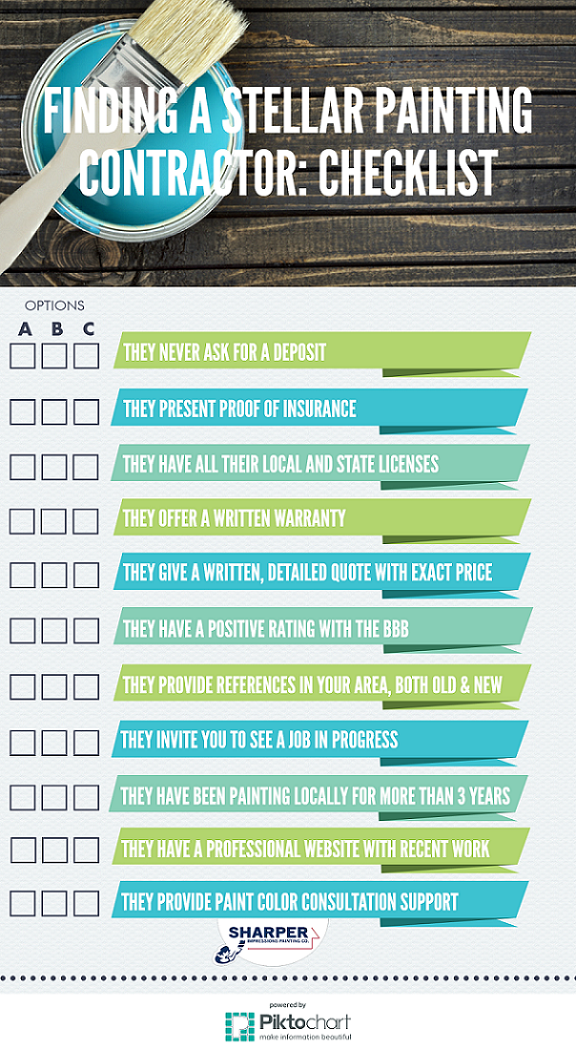Seasonal Considerations For Business Outside Paint: What You Need To Know
Seasonal Considerations For Business Outside Paint: What You Need To Know
Blog Article
Web Content By-Doherty Rosendal
When you're intending a business exterior painting project, seasonal factors can make or break your outcomes. You'll want to think about how temperature level and humidity effect paint application and drying out times. Choosing the appropriate season can ensure your paint sticks properly and lasts longer. However which periods are really the most effective for this kind of job? Let's explore the crucial elements that can influence your task's success.
The Effect of Temperature on Paint Application
When you're preparing a business external paint task, the temperature can significantly influence how well the paint adheres and dries out.
Ideally, you want to paint when temperature levels vary in between 50 ° F and 85 ° F. If it's too cold, the paint might not cure properly, leading to issues like peeling off or fracturing.
On the flip side, if it's as well warm, the paint can dry as well promptly, avoiding proper bond and resulting in an unequal surface.
You should likewise take into consideration the moment of day; morning or late afternoon offers cooler temperature levels, which can be extra beneficial.
Always inspect the producer's suggestions for the particular paint you're making use of, as they usually supply advice on the ideal temperature level range for optimum results.
Humidity and Its Result on Drying Times
Temperature level isn't the only ecological aspect that influences your commercial outside paint task; humidity plays a considerable function also. High moisture degrees can reduce drying out times substantially, influencing the total top quality of your paint job.
When the air is filled with dampness, the paint takes longer to cure, which can cause issues like inadequate adhesion and a greater risk of mold growth. If you're repainting on an especially damp day, be prepared for extended wait times in between coats.
It's critical to keep track of neighborhood climate condition and strategy appropriately. Preferably, go for moisture levels between 40% and 70% for optimum drying out.
Maintaining these consider mind ensures your job stays on track and provides a lasting surface.
Best Seasons for Commercial Exterior Paint Projects
What's the best season for your commercial outside paint jobs?
Spring and very early fall are normally your best options. Throughout these periods, temperature levels are light, and moisture levels are commonly reduced, creating suitable conditions for paint application and drying out.
Avoid summertime's intense heat, which can cause paint to completely dry also quickly, resulting in poor adhesion and coating. Similarly, wintertime's cold temperature levels can hinder appropriate drying out and healing, taking the chance of the durability of your paint task.
Go for days with temperature levels in between 50 ° F and 85 ° F for ideal outcomes. https://local-painters-near-me09887.blogadvize.com/41900804/immerse-on-your-own-in-a-landscape-of-dynamic-possibilities-as-we-disclose-how-professional-home-painters-can-aid-you-change-your-home in mind to inspect the regional weather prediction for rain, as damp conditions can spoil your job.
surface preparation for painting around these aspects ensures your paint job runs efficiently and lasts much longer.
Conclusion
In conclusion, intending your industrial external paint jobs around seasonal considerations can make a considerable difference in the end result. By organizing how to remove dry paint from carpet home remedies throughout the ideal temperatures and humidity degrees, you'll make sure better bond and drying times. Bear in mind to watch on neighborhood weather report and select the right time of year-- springtime and very early fall are your best choices. Taking these steps will assist you achieve a durable and professional finish that lasts.
